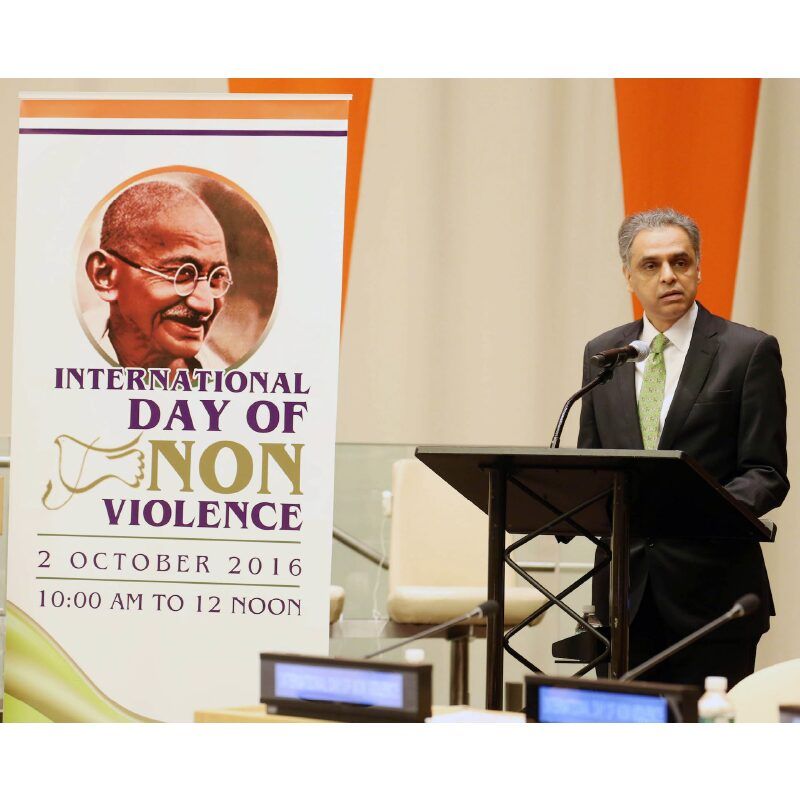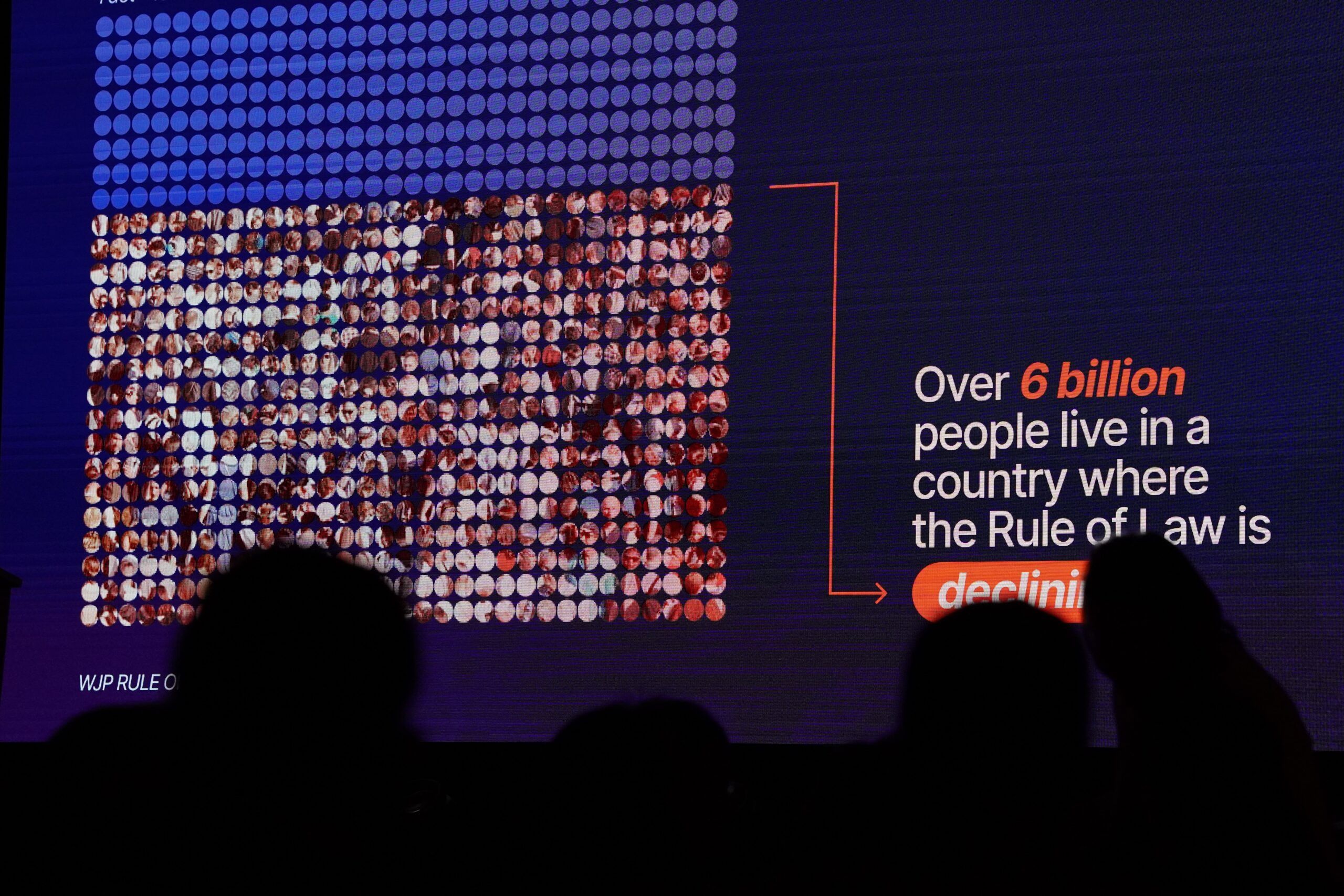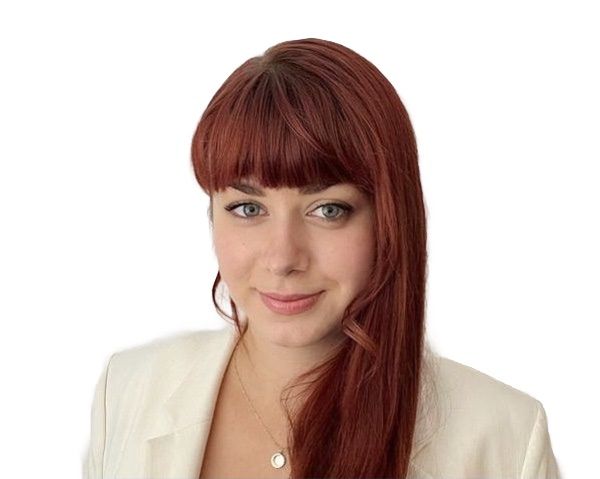India has a long history of UN peacekeeping and in recent months it has been the second largest contributor of troops.
After last year’s reports and the recent round of debates on the future of peace operations and peacebuilding, the Global Peace Operations Review asked India’s Permanent Representative to the United Nations Ambassador Syed Akbaruddin for his perspective on the HIPPO report, protection of civilians (PoC), and peace operations in high-threat environments. Below is an edited transcript of the interview conducted by GPOR’s Jim Della-Giacoma and Alexandra Novosseloff.
Jim Della-Giacoma (JDG): India’s contribution to UN peacekeeping operations has always been significant. With such a large stake in UN peace operations, what is your perspective on last year’s High-level Independent Panel on Peace Operations (HIPPO) report, the Secretary-General’s follow-up, and the debates it has spurred?
Syed Akbaruddin (SA): India has traditionally been a large contributor to peacekeeping operations. In fact, if you take the total number of troops that have been contributed by all countries, we, cumulatively have the largest numbers. In addition, in 1962, India almost lost 100 peacekeepers in a mission, which is the largest number of peacekeepers killed in one mission from one country ever.
When you look at the common themes in regards to peacekeeping operations these days, there are many that resonate with India. For example, PoC, there was no such concept 50 years ago, but there was an Indian Captain in the Congo who was awarded Indian’s highest award for paying the ultimate sacrifice in defense of civilians at that time. As far as we are concerned, we have a tradition of support for the UN and concepts inherent in peacekeeping operations, whether they are articulated or not.
We see peacekeeping operations essentially as a ‘band aid’ while other solutions are being worked on. We have seen over the years that peacekeeping has been looked at as an instrument that serves multiple purposes. We have witnessed over time that it has become a blunt instrument because it tries to do too many things. Instead of being focused and targeted, it is an all-purpose approach. We need to reassess if we are doing things the right way and if there are better ways to improve this to meet the challenges of peacekeeping.
JDG: One of the candidates for the next Secretary-General said recently that he would support the “next generation” of peacekeeping missions, which he defined as including robust peacekeeping and stabilization missions. You seem to suggest that peace operations have over-reached. In your opinion, is taking peacekeeping in direction going too far?
SA: When I arrived (in New York in early 2016) and went to the C34 (Special Committee on Peacekeeping Operations), the first thing that struck me was that the room was full of military personnel in uniform. If peacekeeping is, at its heart, a political tool, then something had changed in how it is operated (since my last posting in the 1990s). I do not have an issue with seeking advise from experts, but if we agree that peacekeeping is a political activity then we should look at those options and not look only at its “robust” nature or technology to help it meet its goal. Not that this is bad for peacekeeping, but we should not forget what the ultimate goal is. I feel that the change in the approach and focus of peacekeeping has resulted in the inherent goal being lost. Therefore, if you hold the premise of the primacy of politics as important, then we need to look at how we address this. The armed forces are one aspect, but we need to look at the other aspects too and give those the same amount of attention.
Alexandra Novosseloff (AN): In a way, I agree with you that in many of those operations, the political goal has been lost. However, the newest emphasis on the military aspect comes also from the fact that in order to be politically robust and stable, you need to have an operation that is militarily strong and this has been a weakness of the UN for a long time. With the changing environment that peacekeeping operations are found in, don’t we need to give them more resources so they can operate in these new environments?
SA: It is certainly no one’s case that we should not use available means and technology. But look at the balance of these: if you have robust mandates regarding force then you need to have robust political mandates too. We do not see this but rather an over-stretch in the military aspects and a lack of follow up in the political aspects. We have now the Security Council virtually all throughout the year approving and extending mandates of peacekeeping operations, but look at what happens on the ground? We do not see as much action in terms of the political aspects of peacekeeping operations. There is a gap between the theory and the practice. The military dimensions are easy to cater for– you need more troops, more technology etc. But the political aspects require more diligence, require more effort and skill. We do not see this being as much the focus. We need to ensure that attention is given to both the political and military aspects.
Every Time, the Focus is On How Many Troops Should Be There. Perhaps We Need to Refocus On What Needs to Be Done and the Troops’ Numbers are Only Linked to That.
JDG: Did the Peacekeeping Summit last year exacerbate this problem by focusing on the Western “return” to peacekeeping operations and the use of technology?
SA: No, not at all. It was good because the summit encouraged more countries to provide troops to missions but more Troop Contributing Countries (TCCs) are not the full solution. When we look at TCCs, we do not see many of them being perceived as stakeholders regarding contributing inputs to mandate development. The TCCs are not given a serious stake in peacekeeping operations. No one takes their input seriously or asks them about mandates. Of course, some many not respond but there should be a platform to allow stakeholders to have the opportunity to provide inputs. This new system may still be coming and the Peacekeeping Summit did encourage a broader base of contributors, which will start a trend towards change. We just need to adjust the approach to have more input given to these TCCs.
AN: What you are talking about is to increase triangular cooperation, which involves improved cooperation between TCCs, the Secretariat and the Security Council. What would you regard as the best formula to encourage all these stakeholders to sit down in one room and really talk about how to implement a peace operation and discuss the daily challenges and difficulties that peacekeepers are facing on the ground?
SA: There have been some individual initiatives to look at this idea, but these do not address the problem. We have the challenge that rotating members of the Security Council want to leave their mark during their presidency and this does not result in an institutionalization of processes. We have had these discussions going back to the 1990s, where there were meetings between the TCCs, Secretariat and Security Council one day before a mandate was to be extended to discuss the development. This was not a serious effort to be inclusive and encourage change. In the past, there may be some instances where there may not have been adequate inputs given by those involved. But lack of adequate inputs in the beginning is no justification for not utilizing adequate communication channels. I do not have a set idea but I think before the mandate is expanded or changed, it would be useful to have all inputs before the report of the Secretary-General or the resolution is drafted. There must be adequate time indicated for this. There is no obligation for all the contributions to be accepted, but a process of providing input should be permitted. This would serve the UN well. If you are looking at a longer-term architecture, then these changes should be initiated. At the start, there may be little input, but over time a habit will develop of giving input and the UN should encourage this now to start a longer term trend.
JDG: The HIPPO report made the case for a “spectrum of peace operations”. In the coming years, we will see a number of peacekeeping operations transitions to other kinds of missions. How do you see operationalizing such transitions?
SA: In theory, everyone agrees that peace is a spectrum and recently the General Assembly and Security Council passed the Peacebuilding resolution agreeing it is not only in post-conflict that peacebuilding should be a focus but that it can be used prior to the conflict, during, and after. But when we compare the budgetary requests for peacebuilding, even 1 per cent of what is being given to peacekeeping was not accepted. How do we expect to do all of this with not even 1 per cent of the budget, perhaps $80 million? Several countries feel that such requests should go through extra-budgetary channels. Other member states see peacebuilding as a good way to protect or restore institutions before you even need peacekeeping. If peacebuilding is so important, then why not commit at least 1 per cent to such initiatives? There is a disconnect between what is being said and what is being done. If you claim the whole spectrum is important, then you need to put equal resources behind this.
JDG: What is your sense on how we should be assessing the effectiveness of peace operations and their mandates?
SA: First of all, we can’t have this mandate renewal with numbers as the basic notion. I do not see any effort of working down the continuum of peace and security. There are peacekeeping operations that have been going on for 20 years plus and with no effort being made to look at how they are addressing the needs they were set up for or working in different ways. We need to seriously look at the politics of these missions. There is a huge amount that needs to be done after the mandate is developed and I am not sure how much effort member states put in this. Many feel their job is done but if solutions needs to be arrived at there needs to be more interest for member states to push these changes to address issues on the ground.
JDG: India is active in a “robust mission” in the DRC and involved in implementing a complicated mandated in South Sudan. Do you think India will continue to be involved and contribute troops to high-risk environments?
SA: If we ran away from high-risk operations then we would not be in any operation from 1962 because we lost about 100 soldiers in that year in Congo. Our general orientation is that we see our contribution as a tangible one to peace and security globally. The more complex operations are, the more political support you need. We would be more comfortable if operations would be measured in terms on how they have progressed on the mandates. If you have a high-risk operation, for example, you could measure if have you brought this down. Risk is intrinsic to a peacekeeping operations and that is what armed forces are trained to handle. Whether they should be peacekeeping operations with anti-terrorist aspects are calls that we will need to decide case by case. In general, support for peacekeeping should not be based on how high the risk is and this will not deter us. What is important to us is whether our contribution will bring down the threat to international peace and security.
JDG: One of the next SG candidates stated his priorities would be “prevention, prevention, prevention”. We have heard similar rhetoric since the Agenda for Peace. How do we move things forward to start see some change? How do we encourage the member states to be more open to allowing some high level of intervention from the organization?
SA: That idea that prevention is better than cure is something we all accept and have been accepting for some time now. But if you accept this, then you need to put some resources behind it. I think development is a key aspect to prevention. If you say that an issue such as development is important but you only focus on it when it comes to prevention of a conflict, then people are bound to question this ideology. You are not in a post-state era. Many see the state as an effective tool in development activities, but in many places the state structures are still coming of age. There is a concern that they will be undermined. There are various models we talk about to deal with this. For example, can prevention be separated from conflict? Can we build institutions and state structures in a pre-conflict mode without focusing on conflict aspects, maybe calling this nation building or development? If you are willing to move it in this manner, there will be less resistance because people will not see it as a political tool.
AN: But prevention is also about having good analysis of information and when you have this, you are able to tell beforehand what the risks are, the drivers of conflict and how to address these. Do you think the UN as a whole is ready to act in this way rather than wait for conflict to erupt?
SA: Most of the present day conflicts, the lack of a resolution or solution is not because of a lack of information. Look at the most serious crisis we are facing today. Nobody can say we did not know this was going to happen; it is just that there are rivalries of a sort that are not enabling you to prevent it. On the risk assessment, all the tools you need are not going to help you when you have a situation on the globe that is more disturbing than before. We are increasingly moving in a direction where the UN’s role was most effective in the Post-Cold war era, when all the major powers allowed a space for the UN to do its work. Today that coordination and collaboration is giving way to more competition and we need to address what the bigger issue is.
AN: But the role of the UN is also to force governments to deal with conflicts because it can raise awareness. I think a large role of the UN is to raise awareness on issues such as emerging conflicts or crisis such as the refugee crisis. The role of the UN is not to go against member states but do push them to do what is needed and to do what they may be reluctant to do. What do you think about this?
SA: I have no problem with that thinking and ultimately in issues such as global public goods or climate change that is the role of the UN–to push everybody to realize there is action needed. However, issues of war and peace are more circumscribed, because you have an architecture of international peace and security that was determined by the outcome of the last world war. You have a Security Council based on a certain mode of functioning based on the results of WWII; the problems of today and the challenges the UN is facing in peace and security are different to then. If you do not evolve, you will have stakeholders who want to take control and resolve these issues themselves outside the institution. Ultimately, if there is an issue that people and states want to get involved in, there must be a means of communication to allow them to share this. If you do not have this, then states look for other means to get involved. This is the reality of many developing countries in regards to peace and security – they are not given the opportunity to give input.
JDG: Will the next office holder be able to facilitate this better relationship?
SA: It is not only the Secretary-General. The SG has a role and a pulpit that he or she can use, but there needs to be a restructuring of the world order. The Secretary-General is one aspect of that but the world order is changing so rapidly and the institution needs to match that. If the UN and its decision-making mechanisms remain frozen in the status quo, it will not be perceived as a nimble organization that can meet the challenges we are facing. There needs to be more than a change in the Secretary-General for the UN to become ‘fit for purpose in the 21st century’. Fit for purpose doesn’t only mean the Secretary-General and the Secretariat; it means reflecting the new global order.
Ambassador Syed Akbaruddin is the permanent representative of India to the United Nations. | Twitter: | @AkbaruddinIndia




